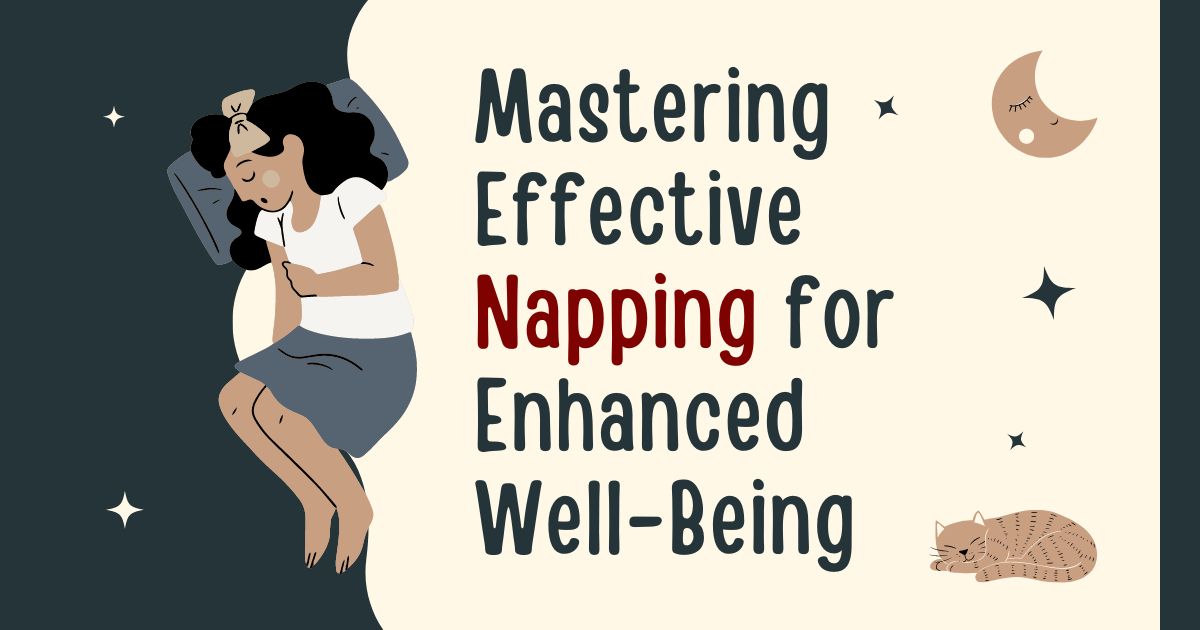In today’s fast-paced world, the art of effective napping has emerged as a pivotal strategy for rejuvenating the mind and body. Rather than viewing naps as a luxury or a sign of laziness, it’s time to recognize them as a powerful tool. Tool for improving productivity, mood, and overall health. This part of the article delves into the fundamentals of effective napping, guiding you through the science behind it, optimal timing, and the benefits that can transform your daily life.
The Science Behind Napping
Napping isn’t just a brief escape from the day’s demands. It’s a scientifically backed practice that offers numerous mental and physical health benefits. Research shows that a short nap can significantly enhance alertness, boost creativity, and improve mood. By taking a brief respite, you allow your brain to process information, consolidate memories, and clear out cognitive clutter. This mental refresh can lead to improved problem-solving skills and a more creative approach to challenges.
Furthermore, napping has been linked to heart health, with some studies suggesting a correlation. Correlation between regular, short naps and reduced stress levels, lower blood pressure, and a decreased risk of heart disease. In essence, by incorporating naps into your routine, you’re not just resting your eyes. You’re bolstering your heart’s health and equipping your mind to tackle tasks with renewed vigor.
Timing Your Nap for Maximum Benefit
The timing of your nap is crucial to reaping its full benefits without interfering with your nighttime sleep. Early afternoon, specifically between 1 p.m. and 3 p.m., is the golden window for napping. This period aligns with the body’s natural circadian rhythm, which dictates a slight dip in energy and alertness post-lunch. Napping during this time can help you overcome the afternoon slump and emerge more alert and ready to face the rest of the day.
To ensure your nap doesn’t disrupt your sleep at night, keep it short. The ideal duration is between 10 to 30 minutes, long enough to refresh your mind but short enough to avoid sleep inertia—the grogginess that can follow longer naps. By setting an alarm and creating a restful environment, you can wake up from your nap feeling revitalized.
Incorporating effective napping into your daily routine requires understanding its science, optimizing its timing, and recognizing the profound impact it can have on your health and productivity. By mastering the art of napping, you unlock a natural, accessible way to enhance your well-being and navigate the demands of modern life with greater ease.
For more insights into how sleep affects health and ways to improve sleep hygiene, visit “Understanding Sleep Hygiene,” a comprehensive guide provided by the National Sleep Foundation.
Optimizing Your Effective Napping Experience
Transform your day with the power of effective napping. Here’s how to create the ideal environment and adopt best practices to make the most out of your naps:
- Create a Restful Environment: Ensure your napping space is quiet, dark, and cool. Consider using an eye mask or earplugs to block out light and noise, creating an ideal setting for rest.
- Timing is Key: Aim for a nap early in the afternoon, ideally between 1 p.m. and 3 p.m., to align with your body’s natural circadian rhythms and avoid impacting your nighttime sleep.
- Keep It Short: A nap of 10 to 30 minutes is sufficient to rejuvenate your mind without causing sleep inertia. Use a timer to prevent oversleeping.
- Consider Your Needs: If you’re feeling particularly exhausted, a longer nap of up to 90 minutes may allow for a complete sleep cycle, providing deeper rest and cognitive benefits.
By following these tips, you can harness the full potential of napping to enhance your productivity, mood, and health.
